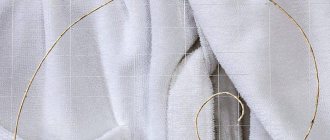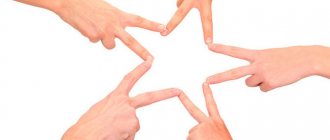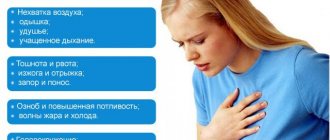The main advantages of running during VSD are not only the normalization of blood pressure, but also the stabilization of health in general;
this is getting rid of VSD; this is self-affirmation and a kind of victory over oneself. How nice it is that, although you have grown older in years, you have not aged physically. You are not registered with the notorious dispensary, you do not visit a doctor and you lead a completely natural life, without bothering your household and work colleagues with your complaints. To begin with, it still makes sense to learn a little about self-control, at least about its elementary tests. We also need to understand the indications for running. It’s also a good idea to determine your psychological state. For example, if a person has been suffering from many diseases for many years, he is impressionable and can react painfully to the mocking remarks of random ill-mannered passers-by, he should start running in special conditions.
Running during VSD in the morning
- When you run in the morning, you have to get up much earlier, often reducing your sleep time.
- Morning running takes place in cleaner air - fewer cars and, naturally, exhaust fumes.
- When jogging in the morning, there are much fewer passers-by, which means there is less chance of hearing offensive words addressed to you.
- In the summer, when running in the morning, the air does not yet breathe heat, and therefore for many it is much easier to run.
- In winter, when running in the morning, you often have to run in difficult conditions - the roads are not cleared or are cleared extremely poorly. In the morning there is always more frost, and therefore you really have to train in tougher conditions.
- After a morning workout, you feel just great all day long - the tonic effect of running continues to work.
Personally, I ran in the morning for many years and did not regret it at all. Although I also noted the following point: no matter how hard I tried, my running speed in the morning was always much lower than in the evening or during the day.
Vegetative-vascular dystonia is a complex of functional disorders in which a disorder in the regulation of vascular tone of the autonomic nervous system is diagnosed.
If symptoms of the disease appear, the patient is recommended to consult a specialist who, after conducting appropriate diagnostics, will prescribe effective treatment. The doctor will tell you whether it is possible to play sports with VSD, based on the patient’s physical condition.
How will playing sports affect the manifestations of vegetative-vascular dystonia?
Vegetative-vascular dystonia is one of the most common diseases, affecting about 70% of the entire population. Often people do not pay attention to the first signs of the development of the disease, attributing the symptoms to fatigue, overexertion or magnetic storms. At the same time, they continue to live in a standard way, without seeing a doctor or undergoing the necessary treatment. Many people play sports, go to the gym, without even suspecting that in the future this diagnosis can provoke serious problems with the heart and circulatory system.
Permitted and prohibited sports
Sports with VSD are allowed to a large number of patients. But experts prohibit certain types. If the vascular type of disease occurs in a professional athlete, then he is recommended to give up regular grueling exercise.
During the course of the pathological process, the patient is allowed moderate physical activity, since their effect is positively reflected in the treatment of the pathological process.
The concepts of sport and VSD are often inseparable. During the course of the disease, patients are allowed to run and swim. Patients are recommended to do morning exercises daily. In case of pathology, it is allowed to practice yoga and step aerobics. A safe sport for VSD is badminton.
If the pathology begins to dictate, then the patient needs to give up excessive physical activity.
- Weightlifting;
- Bodybuilding;
- Discus throwing;
- Armwrestling;
- Kettlebell lifting;
- Martial arts;
- Powerlifting.
With vegetative-vascular dystonia, patients are advised to give up chess. This is explained by the fact that during the game the patient experiences emotional overload.
Chess players stay in one position for a long time. In the absence of physical activity and a simultaneous surge of emotions, the patient may develop a hypertensive crisis.
Physical activity during VSD in the gym is allowed subject to certain rules. The patient is advised to adjust his lifestyle. The patient must maintain a regimen of activity and rest.
A healthy night's sleep should last at least 8 hours. The patient is recommended to provide a balanced diet with foods rich in potassium and magnesium.
When visiting the gym, it is strictly forbidden to allow excessive physical overload. During exercise, the patient should regularly monitor pulse and blood pressure. Manic control of indicators can lead to neurosis and a decrease in the effectiveness of classes.
What is possible and what is not possible with VSD?
With VSD, patients are advised to breathe more fresh air, strengthen their muscles and respiratory system, and improve their nutrition. It is useful to combine walks and rest with exercise, strengthen all muscle groups and the psyche, and tune in to a positive charge.
It is acceptable to conduct classes at home or in the gym. The main thing is to create a comfortable, calm atmosphere and do not forget about dosing the loads.
The main sports recommended for patients with VSD:
- jogging in the morning can eliminate unpleasant signs of illness and maintain physical fitness;
- fitness, step aerobics, but with the platform installed at a low height;
- cycling to develop the muscles of the legs and back, eliminate signs of varicose veins;
- swimming as a gentle method for VSD to train the vestibular apparatus, the pool will also help get rid of extra pounds;
- ice skating to normalize the respiratory system and develop muscles;
- bodybuilding, which people with VSD may prefer;
- fitball with moderate load to strengthen blood vessels.
Walking with VSD
Exercise machines (bicycle ergometer, treadmill, rowing) are appropriate for exercising at home. You can combine exercises, for example: stretching and swimming, or aerobics with strength exercises. The main thing is to prevent signs of arrhythmia and surges in blood pressure. Physical heavy loads during VSD should be carried out correctly and smoothly, starting from 8-12 minutes with a break between exercises of 3-4 minutes.
Is it possible to run with VSD? Running and VSD are quite compatible. The main thing is not to overdo it! Increase the load in the gym smoothly, gradually. It is better to choose complex exercises, combining, for example, aerobics with jogging. It is unacceptable to conduct sports activities through force.
It is good to spend time in nature for those who are intolerant of activities in a confined space, combine physical activity with relaxation, eliminating anxiety and worries. Such walks are well suited for teenagers and young children.
As for contraindicated sports for VSD, these are traumatic, aggressive activities or those that combine increased statistical stress and sudden movements. You should not allow excessive stress or risk your health by resorting to parachute jumping or lifting a heavy barbell. This can cause panic, aggression, psychosis, and deterioration in well-being. In case of VSD, professional weightlifting or powerlifting is unacceptable, even for experienced athletes. Patients with osteochondrosis should choose their occupation with caution.
Strength wrestling (Greco-Roman, classical, freestyle, mixed martial arts, boxing) is strictly contraindicated. These sports are extreme sports, and sudden movements without respite can lead to increased static tension, dizziness, headaches, and shortness of breath. You must not make sudden climbs, drops from a height, rash jumps, carry heavy objects or sharply raise your legs up, or place your head below chest level. This will lead to severe stress on the muscles and heart, which is simply unacceptable with VSD.
Wrestling with VSD is not recommended
Contraindicated:
- resort to strength exercises;
- conduct weightlifting classes;
- test the body for endurance and strength;
- hold breath;
- do sudden squats and bends forward;
- train with a barbell.
If you experience severe shortness of breath, pain in the heart due to VSD of the cardiac type, you should abandon exercises that involve lifting maximum weight, performing somersaults and jumping from heights.
With VSD, exercises with minimal additional weight are allowed
Basic recommendations
With vegetative-vascular dystonia, sports are allowed only if certain recommendations are followed. Physical activity in which the patient is upside down is not permitted. It is not recommended to perform deadlifts, as this can negatively affect the condition of blood vessels. To avoid excessive overload, overheating is not recommended.
Any physical activity should not cause discomfort in the patient. If they appear, you should stop doing the exercise and consult a doctor. Don't overstrain your body. Physical education should have a positive effect on the physical and psycho-emotional state of the patient.
If dystonia occurs in a mild form, then before engaging in a certain sport, a warm-up is recommended. Between approaches to classes, the patient must provide himself with rest. During the period of vegetative-vascular dystonia, thirst is contraindicated. That is why a person should take water with him.
Playing sports with moderate VSD requires avoiding heavy lifting. During physical activity, it is recommended to drink water periodically. Before performing certain exercises, it is recommended to consult not only a doctor, but also a fitness trainer. The specialist will create an individual training program, which will have a positive effect on the patient’s condition.
If the pathological process is severe, then visiting gyms is contraindicated for the patient. He must perform a minimum set of exercises at home. The patient must remember that physical overexertion can lead to a vegetative crisis, which will negatively affect the condition of the heart and blood vessels.
Physical activity for VSD
Vegetative-vascular dystonia and sports are completely compatible concepts, although it is still not advisable to engage in some sports. Doctors are also wary of recommendations to continue professional sports training with VSD. But moderate physical activity is even welcome, because it increases the effectiveness of therapy. Let's take a closer look at which sports are not dangerous for VSD, and which sports activities should be continued with caution.
- Allowed
With VSD, running, swimming, step aerobics, morning exercises, yoga, and badminton are among the sports that are allowed.
- Forbidden
Martial arts, weightlifting, powerlifting, arm wrestling, kettlebell lifting, bodybuilding, discus throwing are on the black list for the diagnosis of VSD.
Chess is also prohibited for people with VSD. The whole point here is not physical, but emotional stress. In addition, a chess player can sit in one position for hours. A surge of emotions against the background of a lack of muscle load can lead to a hypertensive crisis during VSD.
If you have vascular dystonia and you are going to the gym, here is what you need to remember. The entire lifestyle is of great importance: with VSD, you need a correct daily routine, including at least seven hours of sleep and good nutrition. At the same time, there is no overload on the body. Moreover, it is necessary to forget about overloads during training. When playing sports, it is important not to forget about your pulse and blood pressure. However, do not control them manically, otherwise you will develop neurosis and the effect of the stress will decrease.
Recommendations for playing sports with VSD:
- Do not perform exercises while being “upside down”;
- Deadlift is prohibited because it is dangerous for blood vessels;
- To avoid strain, do not overheat;
- If your health worsens, stop training;
- No violence to the body, let playing sports make you happy.
Features of training
One of the best sports for the disease is vegetative-vascular dystonia. During classes, almost all muscles are involved and the body is fully functioning.
There is an improvement in oxygen supply to all systems and internal systems. The training process must be approached correctly and using a specific plan. The patient should gradually increase the intensity of training, which will eliminate the unpleasant symptoms of the disease.
With this approach, the heart muscle will gradually get used to pumping large volumes of blood. This will lead to improved brain activity and a full supply of oxygen.
With regular exercise, there is an improvement in thought processes and the elimination of depressive states, neuroses and psychoses. This will eliminate stressful situations in vegetiovascular dystonia. Running is a public sport. Classes can be held outdoors completely free of charge.
In order to maintain good physical shape, the patient is recommended to engage in fitness. Thanks to a universal set of exercises, all muscle groups, as well as the cardiovascular and immune systems, are strengthened. The action of fitness is aimed at losing weight and maintaining overall tone. Fitness provides the body with endurance.
If you are ill, you are allowed to engage in skiing, horseback riding, and cycling. In this case, one important condition must be observed. The patient's movement should be smooth.
In a pathological process, a large number of sports can improve the patient’s condition and eliminate negative symptoms.
Home activities
If a person does not have enough time to visit the gym, then to improve his health with VSD, he can perform gymnastics at home. It is carried out according to a specific plan:
- We are in a standing position and place our feet shoulder-width apart. We perform simultaneous circular movements with both hands. The duration of the manipulation in one direction is 12 seconds.
- We remain in the same position, bend our elbows, and align our palms with each other. A person should try to squeeze his palms as hard as possible for 20 seconds. The procedure is performed in 6-7 approaches.
- In the same body position, place your hands on your hips. Slowly turn your head in all 4 directions in turn. The manipulation is repeated 5-7 times.
- In a standing position, place your hands on your shoulders. We perform circular movements forward and backward 5-7 times.
- The next step is stretching. The patient can use any method he likes.
- At the final stage, it is recommended to perform statistical exercises. Hands are on the belt. In this case, the patient should try to maintain balance. We raise one lower limb, which bends at the knee. When it becomes parallel to the floor, we pause for a few seconds. After returning to the starting position, we repeat the manipulation only on the second leg.
Correct breathing
Lack of oxygen is one of the manifestations of vegetative-vascular dystonia. It is very important to monitor proper breathing during physical therapy exercises, their effectiveness depends on this. During exercise, blood circulation increases.
Follow the rules of breathing during training:
- try to breathe using the muscles of the abdomen, chest and diaphragm;
- breathe evenly and deeply;
- during exercise therapy, inhale through your nose, exhale through your mouth;
- The breathing rhythm should correspond to the intensity of movements.
Follow the first two rules always, and not just during classes. There are several breathing exercises that will help you breathe correctly automatically. They must be performed 2 times a day. They are absolutely safe and even useful for VSD.
We suggest you familiarize yourself with Exercises for varicose veins of the lower extremities
Perform the exercises 10 times each in the following order:
- Close one nostril with your finger and inhale with the other. A smooth breath should be interrupted by three push breaths. Then exhale through your mouth. Perform 10 times on each nostril.
- Place your hands on your chest and keep it motionless. Inhale quickly through your nose, rounding your stomach, and quickly exhale, drawing it in.
- Place your hands on your waist and repeat the previous exercise, this time using your chest to breathe. The stomach should be motionless.
- This time, inhale through your nose so that your chest opens first, then your diaphragm and belly. Exhale through your mouth, first drawing in your stomach and then contracting your diaphragm and chest.
Breathing exercises will saturate the body with oxygen and help combat dizziness and unsteadiness.
Regular, proper exercise will help you get rid of the symptoms of vegetative-vascular dystonia forever and live a full, active life.
Sports against the backdrop of VSD
VSD refers to pathological signs associated with impaired functioning of autonomic reactions. Their list can be very extensive. We list the most common ones found in the clinic:
- headache;
- fluctuations in blood pressure and temperature;
- emotional lability;
- excessive sweating (hyperhidrosis);
- periodic and reversible sensitivity disorders (paresthesia);
- chilliness, or periodic feeling of heat;
- redness or paleness of the skin;
- panic attacks, or “vegetative storms”, which are accompanied by the fear of death.
Sport with such symptoms is a controversial issue.
- Some doctors try to convince patients that physical activity is undesirable for them and can aggravate the condition.
- But there are exercises to normalize the functioning of blood vessels. Therefore, VSD and sport are often interconnected. And in the end, life is movement. And for functional disorders, it is quite possible to choose the right exercises that will not cause unpleasant symptoms.
Playing sports with VSD: are there any restrictions?
VSD is a multifactorial structural and functional disease that has cardiovascular and neurogenic symptoms;
characterized by asthenia, poor tolerance to physical activity and stress. In the general structure of cardiovascular diseases in adults, it accounts for 12-35 percent. Patients are mainly women from 16 to 45 years old.
VSD and sport are compatible concepts, but the severity and course of the pathology should be taken into account.
Basic recommendations
Sport is an auxiliary method of treating VSD, which increases the effectiveness of therapy. Before selecting a set of exercises, remember these simple recommendations:
- Physical activity should increase motor activity, but not cause sudden changes in body position.
- Don't train as hard as you can. Overload is fraught with deterioration in health.
- Constant monitoring of pulse and blood pressure after another workout causes unnecessary anxiety, which leads to an exacerbation of symptoms.
- Exercise in comfortable clothes and preferably in the fresh air.
- Combine different types of loads to activate all muscle groups.
Sports activities accompanied by your favorite music increase the productivity of your workout and improve your well-being.
In case of vegetative-vascular dystonia, vigorous sports are not recommended. Constant competition, anxiety and fear of losing provoke an exacerbation of the disease.
It is better to limit yourself to simple physical education. In this case, it will be possible to normalize the state of the cardiovascular and other systems while maintaining good health.
Types of load
Some types of exercise are especially effective in combating the disease. In combination, they give a quick and lasting effect.
| Swimming |
|
| Jogging, or better yet, brisk walking |
|
| Classical or step aerobics |
|
| Bike |
|
| Morning exercises and contrast shower |
|
Moderate physical activity will help avoid many health problems, saturate the blood with oxygen, strengthen muscles, and tone the vascular system. It is best to engage in sports from early childhood. The simplest exercises, regular morning exercises, swimming, light running will help you never encounter the problem of dystonia or quickly solve it. It is ideal if a trainer selects a set of exercises, but if one is not available, you can do it yourself.
There are different opinions among doctors regarding how advisable it is to do gymnastics for VSD. Some do not consider it necessary to engage in sports for those patients who are faced with vegetative-vascular problems. Others believe that feasible sports activities will help improve vascular tone and the general condition of the body.
We suggest that you familiarize yourself with Exercises for heel pain
It cannot be argued that gymnastics should be prohibited for such patients, because it has been precisely proven that moderate physical activity improves the general condition of both a healthy person and those who are faced with impaired vascular tone. The main thing is to approach training wisely and consult your doctor first.
Properly organized training will help improve the tone of blood and lymphatic vessels and eliminate instability in the behavior of the peripheral nervous system. Thanks to physical activity, the body produces hormones that improve its general condition, the blood is saturated with oxygen, the nervous system is stabilized, the nutrition of brain cells and metabolic processes are improved, blood vessels and the immune system are strengthened.
Patients suffering from VSD often complain that they are overcome by weakness. You might think that this is due to weakness of the muscles, joints, and blood vessels, but the reason lies in the disruption of the nervous system. This is what needs to be strengthened. The right exercises will help you do this, although you shouldn’t expect too much from such training. This is just an affordable and good addition to therapy.
Many doctors necessarily include a course of physical therapy in the complex treatment of the disease. Properly selected exercises for vegetative-vascular dystonia will help solve several problems at once:
- cheer up the patient;
- increase his self-esteem;
- overcome physical inactivity;
- strengthen blood vessels, tone them;
- normalize brain function;
- relieve stress;
- improve breathing;
- stimulate the functioning of the cardiovascular system;
- normalize metabolism;
- strengthen the body, saturate it with energy;
- increase the ability to adapt to the environment;
- improve performance.
In mild cases of VSD, massage, breathing exercises, and simple gymnastics are allowed. Many doctors even insist on the mandatory implementation of feasible loads.
We will tell you what exercises are recommended to do and what you should avoid. Pay attention to the description of each exercise. It is important to do everything correctly, without overload, limiting yourself to the specified number of repetitions.
Allowed sports
For a professional athlete, the symptoms of VSD are “unpleasant surprises,” but even they are not immune from this. However, certain sports gradually reduce the severity of symptoms. Therefore, they are used for complex treatment of patients with this diagnosis.
The permitted types of physical exercises for vegetative-vascular dystonia include:
- Ordinary jogging outside or on a treadmill - regular jogging improves your well-being, normalizes blood pressure and blood sugar.
- Step aerobics strengthens the cardiovascular system and normalizes blood circulation throughout the body.
- Badminton develops coordination of movements and does not require large amounts of energy.
- Swimming is a universal exercise that has a positive effect on the human body and normalizes the functioning of all organs.
- Morning exercises - gentle stretches, bends and twists strengthen the heart muscle and increase the tone of the body.
Sports for dystonia - is it possible?
It is difficult to think of a more unpleasant manifestation of some disease worse than VSD for a professional athlete. The extensive symptoms of this disease include a lot of unpleasant signs of disease: difficulty breathing, nausea, dizziness, high blood pressure, neurosis, fever. Exercising extreme sports makes panic attacks , which often occur with vegetative-vascular dystonia, almost impossible. You can often hear a misconception - playing sports with dystonia is prohibited either completely or only in its individual manifestations: running, bodybuilding, sports games. This is fundamentally wrong - sports are always useful for everyone, it is only important to take into account contraindications for diseases, monitor the load, and be consistent and step-by-step in your exercises.
Of course, it is important to remain realistic and soberly assess your health, body strength and willpower. It is absolutely not reasonable to engage in powerlifting if often from a sharp rise from a chair you can feel dizzy and darken your vision. Or try to run cross-country races for many hours, when after a long working day you have no strength left and are tormented by neurosis. This approach will only deprive you of all vitality, bring discomfort and even injury. Martial arts, extreme, competitive sports and “heavy bodybuilding” are in the forbidden zone for people susceptible to vegetative-vascular dystonia above degree II and neurosis. This can be extremely dangerous, it is wise to take care of your health first.
“Cyclic” types of exercise, such as running, deserve special mention. Cyclic are those types of exercises that are repeated in a circle, moving one into another. This includes swimming, rowing, cycling, skiing and others. But the most popular, accessible and, perhaps, useful is running. How does running differ favorably from the variety of recreational sports, how and how long can you run with a set VSD? How justified is this?
Contraindicated sports
The number of non-recommended sports is greater. After all, many exercises involve sudden changes in the position of the body or its individual parts. This provokes a worsening of the autonomic disorder and causes a deterioration in the patient’s condition.
As a result, after another game of basketball, a person experiences stabbing sensations in the heart, headaches, and even vomiting.
If a person with VSD has dreamed of great achievements at the Olympic Games since childhood, permission or a ban on playing sports depends on the type of loads that he chooses for himself.
If you have dystonia, we recommend avoiding sharp and fast sports or activities with heavy additional loads:
- martial arts;
- powerlifting;
- discus throwing;
- arm wrestling;
- Weightlifting;
- weight-lifting;
- chess.
The greater the simultaneous load on the body, the higher the risk of developing negative consequences with worsening of the condition.
Why is chess banned?
Do not think that chess is included in the list of prohibited items in vain.
- In fact, chess players experience colossal emotional stress, which is in no way relieved by muscle activity. Therefore, even healthy chess players often experience hypertensive crises after intense games, which lead to heart attacks and strokes.
- From a safety and medical point of view, each chess game should be preceded and ended with either light wrestling or running. The emotional load will be positive only if the energy output is in motion, in the physical component. And an isolated struggle of intellects is harmful to the body.
Exercises in the gym
Exercises in the gym are not contraindicated for dystonics. However, they have a number of features:
- If you have a mild form of the disease, you do not need to limit yourself in anything. The main thing is to do a full warm-up and do not forget about resting between approaches to the apparatus.
- People with severe symptoms already need to take more care of themselves: exclude exercises that are accompanied by sudden lifting of large loads; after each approach, and sometimes directly during it, take a break and drink water. At the same time, reduce the time of one workout.
- Entrust the selection of exercises for regular classes to a professional trainer, who will do this taking into account the person’s complaints. It is important to remember to consult with your doctor.
- For patients with severe VSD, regular exercise in the gym is not recommended. But with individual work, it is possible to choose a gentle type of training.
Recommendations
With VSD, when going to play sports, you need to remember a few things:
- If you have a mild form of the disease, a good warm-up will not hurt before starting sports. Moreover, it is mandatory when playing sports;
- Don't forget about rest between approaches;
- Thirst is contraindicated for you; take water with you to sports training.
Average form of VSD - exclude sports exercises with lifting heavy loads. Drink water during and between sets. It is best to consult with a professional trainer before sports and trust him to draw up a training program. Let him write an individual sports program taking into account your state of health with VSD.
Boxing and VSD
Boxing, like most other martial arts, is one of the extremely undesirable sports for people with VSD. After all, it involves hard contact with the opponent and striking the body. Such an effect has a negative impact on the patient’s condition and worsens well-being.
Boxing itself is a harmful sport, since it is allowed to bring a person to the point of blackout with blows to the head. And, despite the fact that upon reaching this state, a technical knockout is counted and the fight is stopped, the consequences of the injuries received can be very serious. Let us remember the great Mohammed Ali, whose lot was severe parkinsonism.
In the same case, if the sport is selected taking into account the patient’s complaints, and physical activity brings pleasure, vegetative-vascular dystonia gradually recedes, and the body’s adaptive capabilities increase. With regular exercise, a person can significantly improve their well-being, and even forget about the symptoms of VSD forever.











